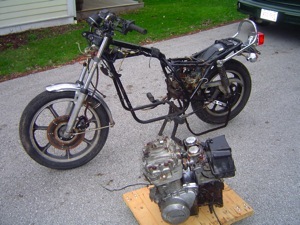 Drizzle once fell on Martian soil, according to a new geochemical analysis by Berkeley scientists, though the rain probably stopped several billion years ago.
Drizzle once fell on Martian soil, according to a new geochemical analysis by Berkeley scientists, though the rain probably stopped several billion years ago.
Drawing on soil data from the five missions to Mars before the current Phoenix Lander and comparing it to information collected in Earth's driest places, the scientists concluded that water must have fallen from above, not welled up from below, as has been thought.
"The soil acts as a sort of an imperfect record of climate change," said Ronald Amundson, UC Berkeley professor of ecosystem sciences and the study's lead author. "We can study the chemistry of the soil and extract information about climate history."
Amundson's key observation is that Martian soil has a layer of sulfates sitting on top of chlorides. That's a pattern consistent with water moving downward from the atmosphere to the regolith in places on Earth.
Though he can't say for sure whether the precipitation on Mars fell as snow, sleet or rain, the evidence of reacting with rocks suggests that the water was liquid on the ground.
The work will be published later this month in Geochimica Cosmochimica Acta, the journal of the International Geochemical Society. It comes as interest in Martian soil has reached new heights. The Mars Rover missions used Martian soil composition to confirm that water once ran on the surface of the now-red planet. Now, the primary value of the Mars Phoenix Lander is its ability to recover and analyze Martian soil for evidence of the building blocks of life. This mounting evidence that liquid water existed on Mars and that subterranean water ice exists now has raised hopes that evidence could eventually be found of simple, extraterrestrial life on the planet.
Amundson's work draws heavily on ultra-dry environments on Earth that are known as Martian analogs. In particular, he has been studying the geochemistry of the Atacama desert in Chile.
"The chemical and physical similarities between the Martian landscape and the dry places on Earth convinced us that deserts held the key to learning about Mars," he said.
Though perhaps it shouldn't be surprising, Amundson's conclusion is: Where water and rocks meet, on Earth or Mars, the same types of things happen.
That sentiment seems to square with an increasing amount of scientific data being generated by recent Martian missions. As we reported a few weeks ago, scientists were able to compare the saltiness of Martian water to the Dead Sea merely from the geochemistry of the compounds left behind when the water evaporated.
"The Atacama Desert and the dry valleys of Antarctica are where Earth meets Mars," said Amundson. "I would argue that Mars has more in common geochemically with these climate extremes on Earth than these sites have in common with the rest of our planet."























